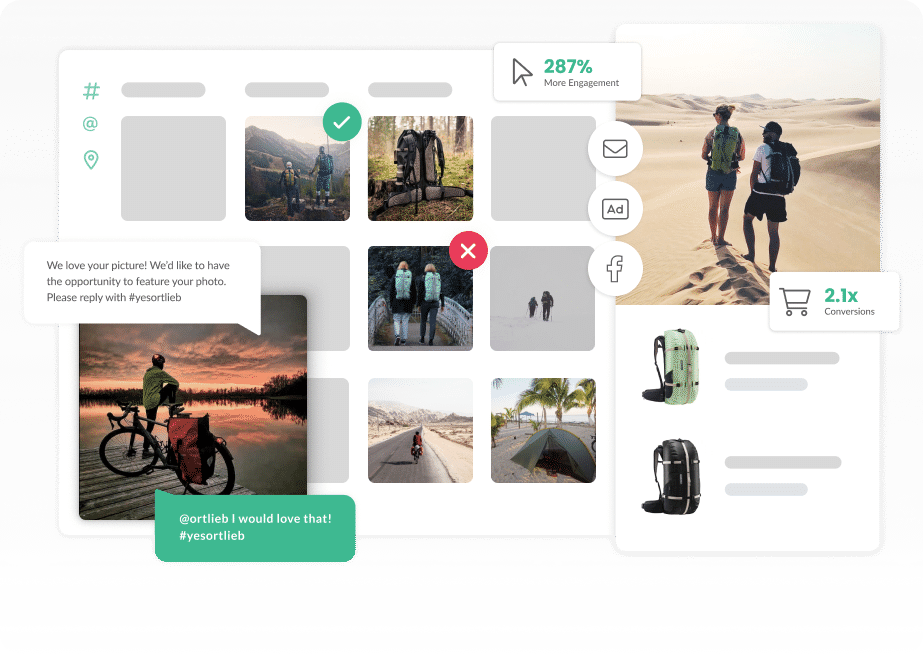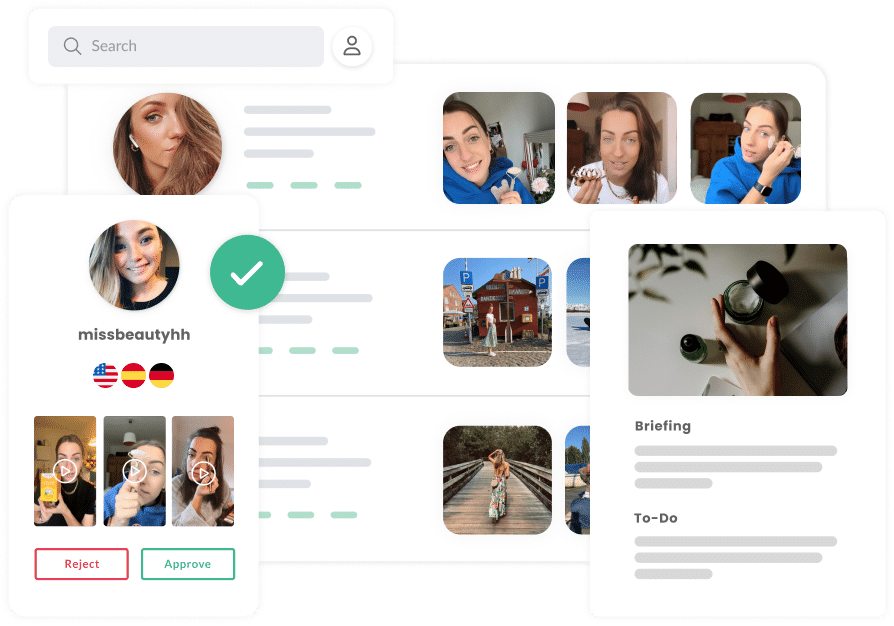Hashtags were once at the heart of every social media strategy. However, their relevance on various platforms is now declining and mentions are becoming increasingly important for brand communication. This shift marks a significant change in the way brands need to interact with their community and shape their online presence. In this blog article, you can find out what this change means for your social media marketing strategy and what you should pay attention to when planning content and campaigns in the future.
The Evolution of Hashtags
Hashtags have their origins on Twitter. There, they were initially used to categorize posts and assign them to specific topics. This function was quickly adopted by other platforms, especially Instagram. Here, hashtags such as #ootd (Outfit of the Day) or #follow4follow became popular means of increasing reach.
For a long time, hashtags were an effective tool for brands to connect with their community. They created a shared space for discussions and made it easier to find relevant content. But times are changing, and with them the role of hashtags in social media.

Lade dir jetzt unsere Checkliste herunter, um die wichtigsten Infos und To-dos von Social Proof auf einen Blick parat zu haben.
Hashtags on various Platforms
To understand the change a little better, let’s take a look at the relevance of hashtags on the most important social media platforms:
Facebook only introduced hashtags in 2013, much later than other platforms. They also generally play a subordinate role here. Although they can be used to categorize posts, their impact on reach is limited. Facebook users tend to discover content via friend lists and group interactions.
Hashtags have become increasingly important on the LinkedIn business platform in recent years. They help to structure professional content and find relevant discussions. LinkedIn even recommends suitable hashtags when creating posts to increase visibility.
TikTok
On TikTok, hashtags play a central role in content discovery. They help users to find thematically similar videos. TikTok’s algorithm uses hashtags to categorize content and provide personalized recommendations. Hashtags also make it easier to search for certain trends, such as the current “Chill Guy” meme. If you search for this trend, all you have to do is enter #chillguy and countless videos of the trend are suggested to the user.
However, hashtags are handy for searching, but are no longer quite as relevant as they used to be. The platform is a major driver of change in terms of hashtags. They are not necessary to simply achieve a high reach. TikTok now sorts content much more according to keywords in the caption, text in the video and even spoken content. The algorithm then uses this sorting to decide which content is shown to the user. It does this by comparing similar content and can thus cover a user’s field of interest.
Instagram: Realignment of the Hashtag Strategy
Instagram, once the stronghold of hashtags, is currently undergoing a change. The platform recently announced that it will discontinue the function of following individual hashtags from December 13, 2024. Instead, SEO in captions is gaining in importance. An informative text increases the potential to go viral – much more so than the use of hashtags. Nevertheless, hashtags remain an important means of categorizing content.
They are particularly helpful in differentiating content for specific campaigns from general brand content. Instagram now recommends using fewer but more relevant hashtags. The quality and relevance of hashtags has therefore become much more important than their quantity.
The increasing Importance of @-mentions
While hashtags are becoming less important, @-mentions are becoming increasingly relevant. This function makes it possible to mention certain profiles and accounts directly. For brands, this offers a more effective way to connect directly with their community.
@-mentions offer several advantages over hashtags:
- Notifications: If a brand is marked with an @-mention, it receives a notification informing it that it has been mentioned in a post. This makes it less likely that posts from the brand will be overlooked than if only a hashtag is set.
- Easier sharing of content: Tagged content is easier to share, whether in Instagram Stories or on LinkedIn. This promotes the interaction and distribution of user-generated content and simplifies it.
- Increased visibility: @-mentions contain the direct name of the brand and a link to the profile. One click takes users directly to the corresponding account.
- Simplified content management: Tools such as the squarelovin UGC Manager can effectively use @-mentions to identify relevant content for your brand and automate the request for usage rights.
The Combination of Hashtags and @-mentions
Despite the growing importance of @mentions, you should definitely continue to combine both elements for social media campaigns. Mentions facilitate direct communication and sharing of posts. Hashtags still serve as useful filters to find and organize all submissions for a campaign.
#GOBACKPACK from Jack Wolfskin
A good example of a successful social media campaign is Jack Wolfskin’s #GOBACKPACK campaign. The aim of the campaign was to encourage customers to show their Jack Wolfskin products in action and authentically convey the “at home outdoors” feeling that the brand stands for.
To achieve this, the brand launched a competition. When making a purchase in the store, customers received a flag with the words “Go Backpack” and were asked to share a post with their Jack Wolfskin products and the flag on Instagram.
The prize for the best picture: 200€ or a refund for the last Jack Wolfskin product purchased.
The condition: The mention @jackwolfskin and the hashtag #gobackpack must be set.

This incentive enabled Jack Wolfskin to generate over 5,000 contributions from the community within three months, which they filtered and managed via the squarelovin UGC Manager in order to obtain usage rights for the content.
The brand’s @mention guaranteed the visibility of the content and the hashtag ensured that all submissions within the campaign could be collected in one place. Find out more in our Jack Wolfskin case study.
Conclusion
It would be premature to proclaim the end of hashtags just yet. Instead, we are seeing a reorientation of their use. Hashtags remain an important tool for categorizing and finding content. However, they need to be used by brands in a more targeted and strategic way.
@-mentions are gaining in importance as they enable a more direct and personal form of interaction. They promote dialog between brands and their community and make it easier to find and share relevant content.
For you and your brand, this means it’s time to adapt your strategies. You need to find a balanced mix of targeted hashtags and strategic @-mentions. This combination makes it possible to both increase visibility and build real connections with the target group.
The future of social media communication lies in the intelligent use of all available tools. By striking the right balance between hashtags and mentions, brands can optimize their online presence and build authentic relationships with their community.










